Thoughts on increasing resolution
Just as we have predicted last year, the resolution of phones’ image sensors has further increased, currently 8 megapixel being the top in Europe. We already had some notes on this phenomenon in our review entitled What is a phone’s camera capable of?, so now we can really just repeat the same thing: users still believe in numbers, as on a market, that is so hard to measure on an objective scale, they believe these are the only solid foundation on which they can rely. As always we again try to get some more insight on things, and support the potential buyers of the phones in our review, with an article that can help them take a decision, relying on something else than simple numbers.

8 megapixels. This is where the European mobile photography is currently, but the question is why. Practically what does an average user use his or her phone’s camera for? They usually capture family events, memorable moments, so they do exactly what they would do with a compact digital camera, thus they feel that the advantage of a high-resolution image sensor, embedded in a phone, is that they don’t have to carry two devices with them, they can take pictures anywhere and anytime, since the phone is always there. This is great until now, but the question is what will an average user do with the resulting pictures? There are two cases: people store them on a computer until the end of times, or, if they have proper quality pictures, they print them, usually in 9 x 13 or 10 x 15 cm size. If we look at how many pixels there are on a given area we get to see that in order to print a photo of such a size, a 3 megapixel camera is more than enough, so the question is righteous: what do we want to use the additional resolution for? 5 megapixels are theoretically enough for printing A3 photos – or posters, to be more precise – so why do we have to stick to 8 megapixels? The answer is simple as daylight: this is marketing.

So we’re here, with all the available 8 megapixel handset on the market, four little gadgets. Again, Samsung is the leader, since two of the phones are from them, and besides that we have a phone from Sony Ericsson, considered the pioneer of built-in cameras, and one from LG as well, who are gaining an increasing foothold on the market. These are three names, although there are five large phone manufacturers on the market, so where are Nokia and Motorola? Well, it looks like the Finnish somehow don’t want to take part in the megapixel-war, which I might basically consider a positive attitude, but it seems that the company still doesn’t invest too much energy in improving the image quality of their phones’, I might even say that they are content with what they have and with the licensed Carl-Zeiss brand. Motorola, however, is trying, the best example being their recently launched ZN5 model, the camera being developed together with Kodak – it’s another thing that in the case of this company, which is in a quite grim financial situation, it might happen that they won’t launch any more photo phones. So this is the situation, in early 2009.
What can you put in a phone + testing environment
Before taking a look at the phones and analyzing the pictures taken with them, let’s see what qualities are required to take nice pictures with a photo-capable machine (phone or camera, that doesn’t matter right now). As a matter of fact what is a photograph?
Taking pictures with the 8 megapixel phones proved to be a challenging task. The basic problem has been that we have done the whole thing in January, as we have waited for all 8 megapixel phones to become available, and it will take months to have new members in this series. Fortunately our chief editor (alias Honorable Bog) had some empathy and he didn’t send me all on my own to take the pictures, so we have both embarked on this big city adventure. I have been the one to hunt down the four phones, but I have been ignorant enough to take them without any charger or accessories. The problem has appeared with Samsung Innov8, as I had no charger or data cable to that one. The handset displayed a battery level of 3/7 when starting off, but it went offline quite soon – much before ending the test – in the -10 grades, which made the test impossible. So we’ve went to a nearby store and bought a 1.8 meter long microUSB cable for 10 euros. It would have been no problem it, besides it’s freaking high price, but it has been a bit unpleasant that the Sun, that doesn’t shine too much anyway this time of the year, signaled us early that we have at two hours at most to take pictures. This means that we had no time to go into a restaurant to charge the phones a bit, so we’ve been charging them from my notebook during the test, in the middle of a plaza. We have of course recorded a video of this special event; have a look at it at the bottom of the page.
Well, the name tells a lot: the photograph is in fact a storing of light, as we know everything we see – including colors – originates from light, it can be seen because of light. So digital cameras and mobile phones store the light we see, in this case they do this in the form of a binary code on a memory card or other storage device.
There are basically two three things that influence the quality of the pictures: the lens quality, the physical properties of the image sensor and the signal processing system. We have discussed these in detail in our article we’ve mentioned on the previous page, so now I’d only mention that how well can mobile phones fulfill these requirements. I think that the answer is quite evident: not completely. The bottleneck is of course the lens, as manufacturers can’t put the best ones in the device, due to size restraints, even though the whole process starts here, as if the light passes through low-quality lens, which don’t decompose it properly, than it doesn’t really matter (with a bit of an exaggeration) what kind of image sensor will process it, the end result will be poor. You can see that the image sensor won’t improve image quality drastically in the case of phones, no matter we have a 20 megapixel resolution, color fidelity or edge sharpness won’t improve; we might have less noise – as that’s influence by the sensor’s size and quality – but I would like to add immediately that higher resolution images have more noise (at the same sensor size)…
So, after the bit long introduction, let’s see if mobile imaging quality has improved somewhat with the increase in resolution, but first let’s see the “making of” movie we’ve mentioned before.
The contestants
The ones reviewed are Samsung i8510 Innov8, Sony Ericsson C905, LG KC910 Renoir and Samsung M8800 Pixon. Let’s take a quick look at their basic specs before getting to the pictures.
Samsung i8510 Innov8
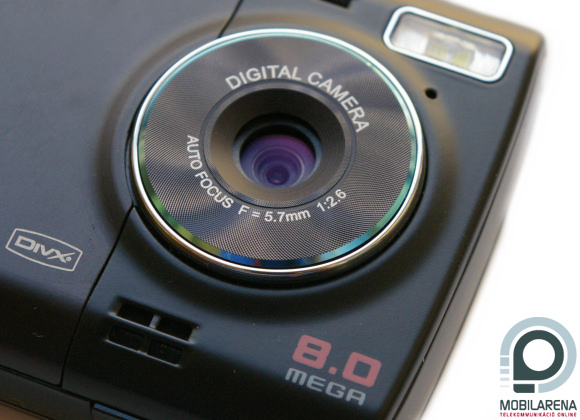
Our first contestant is the first 8 megapixel phone of Europe, which has been launched at use late September last year. The handset is a great rival of N96, it’s also based on the Symbian Series 60 operating system, which also means that it’s the most expensive phone of the four, its SIM-free edition costs about 400 euros. We have no information about the lens manufacturer, but since Samsung also makes such things, it is possible that they have their own lens in Innov8.
Sony Ericsson C905
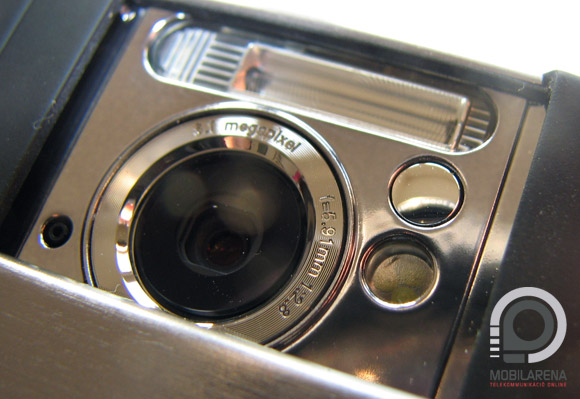
Our second device is from Sony Ericsson, who had a bad time during the launch and manufacturing of the 5 megapixel phones, they have been second in the 8 mpix “launch-race”. C905 has been available since mid-October 2008, at a current average price of 375 euros. The lens manufacturer is again unknown, but since Sony Ericsson, similarly to Samsung, is into such things, we’re almost sure that they have been the ones to create the lens system of C905. This machine has a Xenon flash, but in spite of this it has a LED too, which works as an AF light in poor light, so it lights up the object we want to take a picture of – a special bonus point for the manufacturer.
LG KC910 Renoir
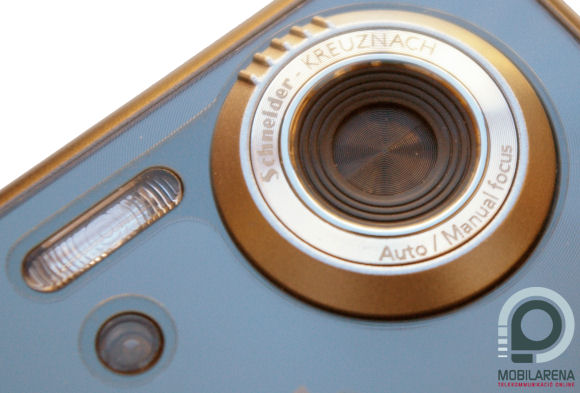
The third device is from LG, it’s called KC910. The handset is also known as Renoir, which is an evident sigh of its powerful imagery qualities. Its lens system is made by a renown German company, Schneider Kreuznach (just like in the case of previous models). At least that’s the official info, but Renoir is still the cheapest phone of the quartet, it costs about 320 euros. Its menu system is based on the Prada/Viewty line, so it’s a touchscreen device, which also has a Xenon flash.
Samsung M8800 Pixon
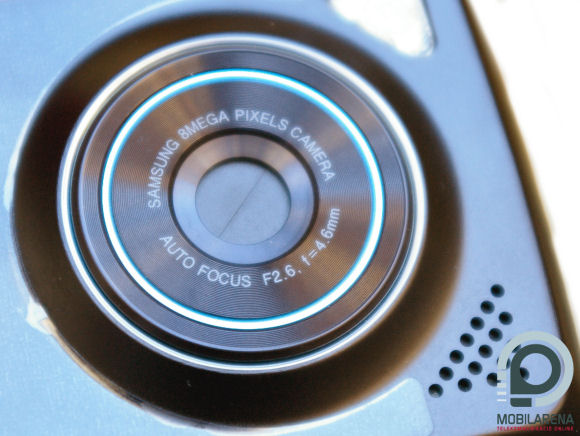
Last, but not least, here’s the second Samsung model, M8800 Pixon. The handset is based on Samsung’s TouchWiz menu system, so it’s also a touchscreen device, thus the camera’s software and – probably – the image processing algorithm are completely different than on Innov8. The SIM-free version currently costs about 360 EUR.
Image noise, optical properties
Sticking to their bad habit, the manufacturer’s didn’t reveal any kind of information about the type and size of the image sensor in their phones, although we would be very interested in the second info, as it would be required to calculate the view angle of the cameras’. According to our sources Samsung Innov8 is the only handset to have a sensor from a compact camera, others have a smaller chip – of course this is unofficial information, we’ll see if the results support these speculations.

Not knowing the sensor size, we had to estimate the view angles. There is no optical zoom on any of them, so the angle is fix, but it would be impossible to convert them to the miniature camera system, so we can only have an absolute order. But this is rather simple, as C905 has by far the lowest angle, but Renoir doesn’t see much more of the world either. The two Samsung models have about the same views, there is a rather big difference between them and the previously mentioned two handsets. The Samsung phones can have about 36 – 38 mm of focal length, while the other are somewhere between 40 and 45 millimeters. For the sake of those who are not very much into photography let’s say that from the average user’s point of view, in the case of devices with a fix focal length, the bigger view angle is the better, as this means that when taking a picture from a fixed position, “more things fit” in the picture – the smaller number means the bigger angle, an average camera is around 35-38 mm, while lens at 28 mm or less are wide-angle lens.
And now let’s see noise level and noise filtering with the help of these test pictures:
Samsung i8510 Innov8 / Samsung M8800 Pixon
(100% cut)




Sony Ericsson C905 / LG KC910 Renoir
We hope that everyone can see that Innov8 is completely different from the other. This is the only handset where the texts can be read. The next one is Pixon, which might not have a much better image sensor than C905 or Renoir, but it has better software processing, as Sony Ericsson’s phone – similarly to other handset from the manufacturer – has too much noise filtering, while Renoir practically doesn’t have any. Of course this is exaggeration, based on noise level and noise filtering we think that LG’s phone has the weakest image sensor of them all. The acerage image size is in accordance with the noise level, Renoir takes the smallest picture, Innov8 and C905 are about the same medium level, but for other reasons: Innov8 has less noise, but has more details, while C905 takes noise-filtered pictures. Pixon, however, won’t save space, it takes the largest pictures, which should mean that these pictures have the most details, but in fact that the average amount of details is joined by a lot of noise.
Before getting to the test photos, we’d like to note that Sony Ericsson C905 is the only handset from the four where we can clearly spot chromatic aberration. This phenomenon is the bug of low-quality lens: it can be observed in the case of contours with high contrast difference (for example a tree’s branches in front of the sky), as the outline gets a purple color. The situation is not that bad as in the 5 megapixel handsets from the Japanese-Swedish manufacturer, but it’s rather sad that they won’t correct their own errors.
The software is also highly different. The most settings are on the two Samsung phones, they have a single serious lack: they can’t shoot image sequences at full resolution. Renoir and C905 are both weak from a couple of points of view, for example the SE won’t allow us to manually set sensitivity, it has only two JPEG compression levels, we can’t turn on either blink detection or backlight compensation, or gridlines and it has no center-weighted light metering. On the LG we can’t set light metering at all, but we can tamper with sensitivity and it has the extras I’ve told you before. Another negative thing is that they have half the preset modes than the Samsung phones, and furthermore we can even set edge sharpness on Innov8 and Pixon, but not here. I would also like to note that higher dynamics range (from software), the face recognition focus and the GPS-tagging are available on all models, C905 is weaker as it can’t focus on smiles. Here is the fully detailed specs table:
| Handset | Samsung M8800 Pixon | LG KC910 Renoir | Samsung i8510 Innov8 | Sony Ericsson C905 |
| Maximum resolution | 3264x2448 | 3264 x 2448 | 3264x2448 | 3264 x 2448 |
| Preset modes (nr.) | present (13) | present (5) | present (13) | present (7) |
| Sensitivity (ISO) | 100-1600 | 100-1600 | 50-1600 | cannot be set |
| Light metering modes | matrix, center-weighted, spot | cannot be set | matrix, center-weighted, spot | matrix, spot |
| Exposure-correction | +/-2 EV, 0.5 EV steps | +/-2 EV, 0.5 EV steps | +/-2 EV, 0.5 EV steps | +/-2 EV, 0.3 EV steps |
| JPEG-compression levels | 4 | 3 | 3 | 2 |
| Edge sharpness can be set | yes, 4 steps | no | yes, 4 steps | no |
| Flash modes | on/off/auto | off/auto/red-eye | on/off/auto | off/auto/red-eye |
| Average image size | 1.8 - 3 MB | 1.2 – 1.9 MB | 1.9 – 2.3 MB | 2 – 2.3 MB |
| White balance | can be set | can be set | can be set | can be set |
| Effects | present (6) | present (4) | present (4) | present (4) |
| Self-timer (seconds) | 2, 5, 10 | 3, 5, 10 | 3, 5, 10 | 10 |
| Image sequencing (number of pictures) | 9 pictures (QVGA only) | 7 | 9 pictures (VGA only) | 7 |
| Panorama pictures | present | present | present | present |
| Frames | present | present | present | present (QVGA only) |
| Can camera sounds be turned off? | yes | yes | yes | yes |
| Grid | present | present | present | none |
| Software image stabilizer | present | present | present | present |
| Face-recognition focus | present | present | present | present |
| Expo on smile | present | present | present | none |
| Increased dynamics range (software) | present | present | present | present |
| GPS-tagging | present | present | present | present |
| Extras | blink detection, mosaic photo, backlight compensation | blink detection, backlight compensation, manual focus | blink detection, backlight compensation | AF light, BestPic |
Daylight photos
Just a quick note before the test images: the daylight images have been taken in auto mode, with the software image stabilizer being turned on, so we didn’t use preset modes and we didn’t increase the dynamics range with the software wither. At the macro photos we have of course turned macro mode on, where it has been available.
The first pictures have been taken in the usual place, on the balcony at my place. It’s a great thing that all four handsets have taken usable pictures, there is no serious difference in colors, the automatic white balance didn’t miss, although there hasn’t been very much sunlight. It would be hard to decide which phone took the best picture, as they are all right from the point of view of edge sharpness as well, but it’s still evident that C905’s picture has the least amount of details, due to the heavy noise filtering. I would also like to note that the edges of Pixon’s picture are softer than they should be.
Samsung i8510 Innov8 / Samsung M8800 Pixon
(100% cut, click for full size)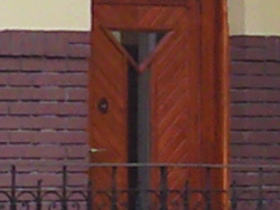
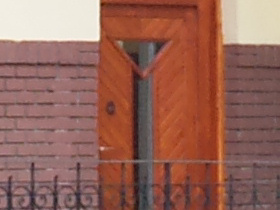


Sony Ericsson C905 / LG KC910 Renoir
Our second place for testing is a church and the cars parking in front of it, as least as much of them as it would fit in the handsets’ view angles. It’s strange that in the case of the widescreen Pixon and Renoir we can’t see the full picture on the screen before taking the picture, so it has been hard to judge where to take the picture from. The cars are missing on C905, so we can’t say anything about their softness, but it’s sure that Renoir blurred them a lot. Innov8 is good again, it’s only problem might be that it has underexposed the photo by about 0.5 EV. Pixon, however, performed surprisingly well, we can even read the plate numbers on the cars.
Samsung i8510 Innov8 / Samsung M8800 Pixon
(100% cut, click for full size)
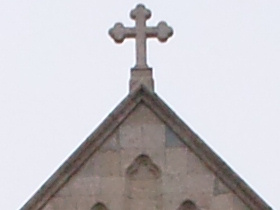
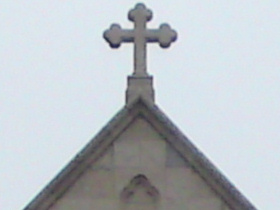
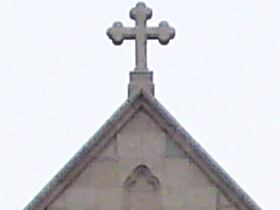
Sony Ericsson C905 / LG KC910 Renoir
We have already shown you part of our third test picture on the previous page, so we can only say the same thing again: Innov8 wins in details, Pixon is the average one, while the competitors fall much behind. As for colors, the phones are at about the same level, we see that Pixon is paler than it should be, while Innov8 is just a bit better than the others.
Samsung i8510 Innov8 / Samsung M8800 Pixon
(100% cut, click for full size)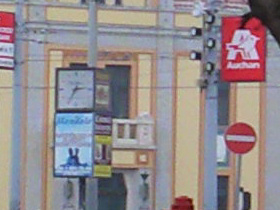
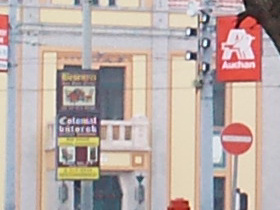
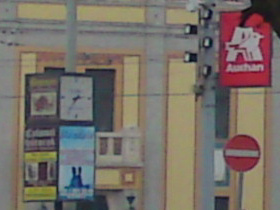
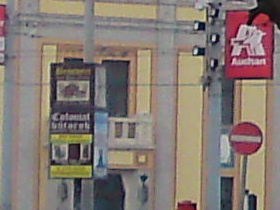
Sony Ericsson C905 / LG KC910 Renoir
Macro, night and flash pictures
There is no problem with the macro capabilities of the contestants, all four pictures are really nice. It might be confusing that Innov8 took a photo with lighter tones, the reason for this might be that we have accidentally held it a bit closer to the object, so it might not have been able to focus perfectly.
Samsung i8510 Innov8 / Samsung M8800 Pixon
(50% cut, click for full size)




Sony Ericsson C905 / LG KC910 Renoir
The differences are clearly visible on the night photos. I should note that all the pictures have been taken with night mode turned on, if we don’t enable this then we get some very disappointing results. Noise level is rather high on all four pictures, since three of them set a high sensitivity (Innov8: ISO 400, Pixon: ISO 320, LG: ISO 200), and we can see the difference between the image sensors that the noise level is still about the same on all photos. Sony Ericsson, however, didn’t change much: sensitivity remained at ISO 100, which shows that not only the manual setting is missing, but even the automatics can’t change this value, which is more than strange. Only the two Samsung phones took usable images, it’s no use talking too much about LG’s near black and white, underexposed horror, or Sony Ericsson’s overly dark image, using a wrong white balance, as they tell quite much about themselves.
Samsung i8510 Innov8 / Samsung M8800 Pixon
(click for full size)



Sony Ericsson C905 / LG KC910 Renoir
Finally let’s see the flash images, which have been taken in pitch black. None of the handsets had any problems with focusing, Sony Ericsson C905 has a dedicated LED for an AF light, while others have used the flash to light up the object during focusing. We’ve been expecting the best results from the slider, as it has a huge Xenon flash, and fortunately we haven’t been disappointed, it took a really nice picture. It’s still surprising that Innov8 took a similarly great picture, although it has only a LED flash. Pixon didn’t do much, while LG took a mediocre, a bit too dark photo, even though this has a Xenon flash as well.
Samsung i8510 Innov8 / Samsung M8800 Pixon
(100% cut, click for full size)



Sony Ericsson C905 / LG KC910 Renoir
Summary
Before announcing the results, the jury didn’t have to consult too much, and it’s also probable that our dear readers can already decide the order. We think that currently Samsung i8510 Innov8 is the best commercially available 8 megapixel phone, since independently of the circumstances it took great pictures, much better than the rivals, the macro and the flash pictures being an exception, since C905 hasn’t been bad with its Xenon flash and all four handsets took good macro images. The second place goes to Samsung M8800 Pixon, as its pictures have more details than others, it has a wider view angle and more software settings, but it takes too large pictures and its flash is weak as well.
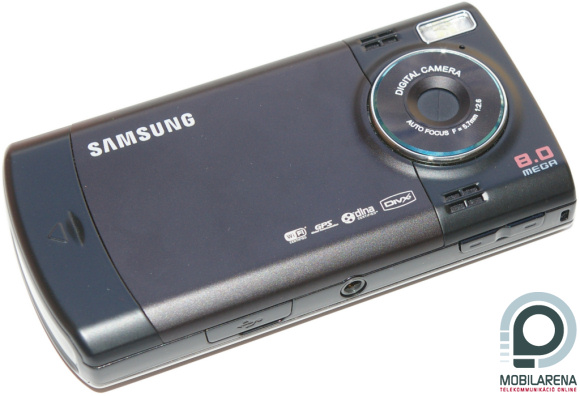
[+]
The first European 8 megapixel phone is still waiting for a challenger
Sony Ericsson C905 and LG KC910 Renoir are at about the same level, both take very good quality pictures for a mobile phone, but they are much weaker than the Samsungs. Sony Ericsson promised a new software for next month, which should improve the photo capabilities of the handset, we’re eagerly waiting for it. As for LG we are happy that KC910, even in spite of its flaws, caught up with the others, at least in terms of photo capabilities and its set of features. C905 and Renoir share the third place, as although both have serious issues with a couple of things, it would still be hard to judge which has more.
As a final word, let’s see the eternal question: can a mobile phone replace a camera? It can, but not for anybody. Those who would like to capture family events or funny moments, can be well off with any of the four handsets, but Innov8 is the only one of them which gets even close to the quality of an entry-level compact camera. Of course it can’t reach it because of its technical specs, as it has no optical zoom. If the successor will feature this besides the high-quality image sensor than we can probably welcome Europe’s first phone that can completely replace an entry-level – I repeat: entry-level – compact camera. Let’s just wait a bit with the champagne.
Bocha feat. Bog
Translated by Szaszati







